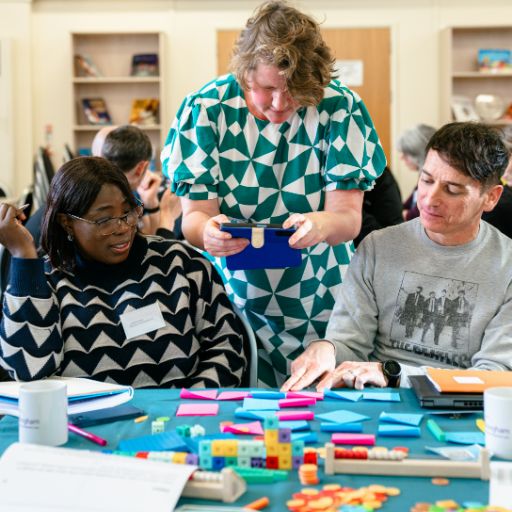A community of professionals
who learn with, develop and support colleagues across the region with a shared aim to enable the very best mathematics outcomes for pupils and students across South Yorkshire.






2. Introducing 'whole' and 'parts': part–part–whole
Introduction
Introduce children to the concept of partitioning which underpins many of the subsequent segments, and build towards use of the part–part–whole model.
Teaching points
- Teaching point 1: A ‘whole’ can be represented by one object; if some of the whole object is missing, it is not the ‘whole’.
- Teaching point 2: A whole object can be split into two or more parts in many different ways. The parts might look different; each part will be smaller than the whole, and the parts can be combined to make the whole.
- Teaching point 3: A ‘whole’ can be represented by a group of discrete objects. If some of the objects in the group are missing, it is not the whole group – it is part of the whole group.
- Teaching point 4: A whole group of objects can be composed of two or more parts and this can be represented using a part–part–whole ‘cherry’ diagram. The group can be split in many different ways. The parts might look different; each part will be smaller than the whole group and the parts can be combined to make the whole group.
